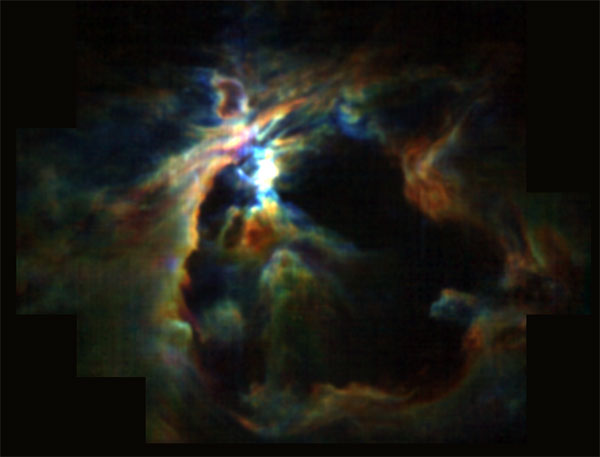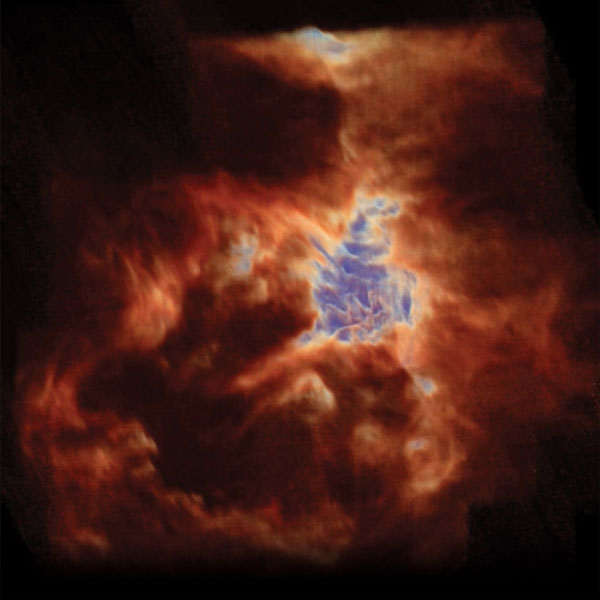NASA's planebound SOFIA observatory has captured a far-infrared view of the Orion Nebula that reveals the actions of the region's stars — and the striking illusion of a dragon at the nebula's core.
The Orion Nebula is the nearest site of massive star formation, where stars with more than eight times the Sun's mass are born. Once these stars ignite fusion in their cores, they burn hot and fast and end their brief lives in brilliant supernovae. Their actions shape future generations of stars, but just how they sculpt the gas around them has remained an open question.
At the winter meeting of the American Astronomical Society in Seattle, Alexander Tielens (Leiden University) and Joan Schmelz (SOFIA / USRA) presented new data from the SOFIA observatory, which flies aboard a modified 747 airliner. Since SOFIA soars above much of Earth's atmosphere, its German Receiver for Astronomy at Terahertz Frequencies (GREAT) instrument can observe at far longer wavelengths than would be accessible from the ground. Moreover, GREAT captures not just two-dimensional images but 3D "data cubes." Every pixel of an image carries a spectrum, so every image has millions of spectra.

NASA / SOFIA / Pabst et al.
The astronomers used the chemical fingerprint of ionized carbon to trace out the nebula's 3D structure — and the movement of that structure. The observations show that the brightest of the nebula's infant stars, dubbed θ1 Orionis C, emits a powerful stellar wind that has swept surrounding material into a large, bubble-like shell. Turns out it's the wind's push, rather than the pressure from the star's light, that's most strongly shaping the nebula's gas, and ultimately, the future of the region's starbirth.
Find more details on these reuslts in SOFIA's press release.
There Be Dragons Here
The Orion Nebula isn't uncharted territory — as the nearest massive stellar nursery, astronomers have studied it closely for years. Still, at 1,300 light-years away, this tumultuous terrain isn't exactly well-trodden either. The data cubes collected by the GREAT instrument give astronomers a fresh perspective on a familiar region, enabling new discoveries. Already, the image shown below has led to the discovery of a new filament not seen in any other images, says Schmelz.
The new data also offer a game of pareidolia, also known as the art of seeing shapes in clouds. “As we rotated the data cube, we got our first glimpse of the structure that we’ve nicknamed Orion’s Dragon,” says Rhys Taylor (Astronomical Institute of the Czech Academy of Sciences). “A few people have said it looks like a sea horse or a pterodactyl, but it looks like a dragon to me.”
What do you think? Dragon, sea horse, pterodactyl, or something else altogether?

NASA / SOFIA
Rotating the data cube offers an even better view of the beast. (The thin part of the "cube" contains the spectra, from which astronomers can derive velocity information.)
 0
0
Comments
You must be logged in to post a comment.